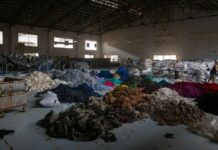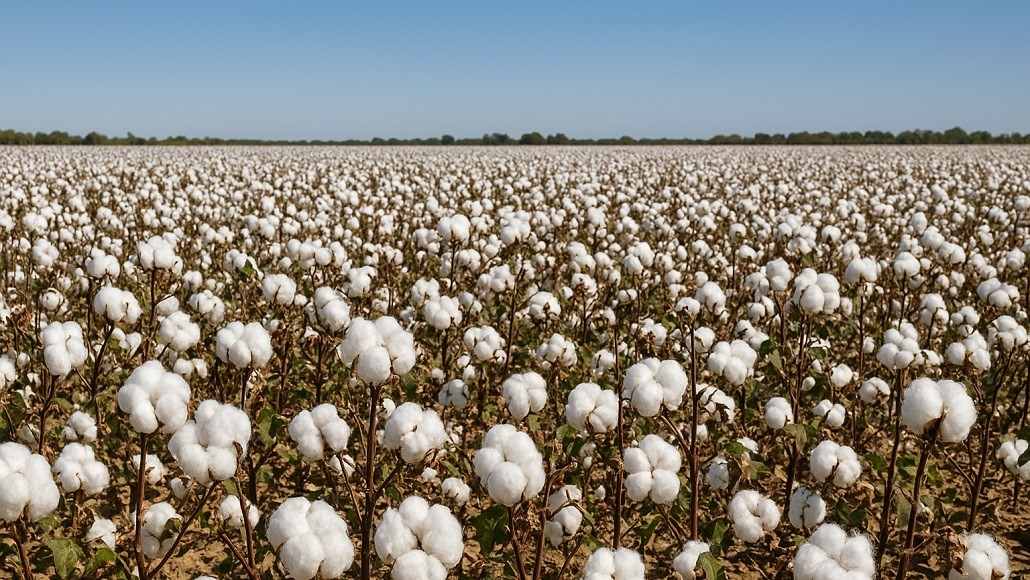India is preparing for a surge in cotton arrivals in the coming week, with expectations to reach their peak by mid-November. Farmers are poised to deliver seed cotton in significant volumes once the Cotton Corporation of India (CCI) begins full procurement at the minimum support price (MSP). Delays in this year’s cotton crop have occurred due to late monsoon rains and a later sowing season, with Maharashtra, a major producer, still experiencing rainfall.
Recent data from the Ministry of Agriculture indicates that cotton acreage for the current season is at 110.03 lakh hectares, a decrease from 112.97 lakh hectares last year. The area planted was 123.71 lakh hectares in the previous 2023–24 season, and averaged around 129.50 lakh hectares over the last five years.
Market traders have noted that daily cotton arrivals in India before Diwali fluctuated between 50,000 to 60,000 bales of 170 kg. Although cotton arrivals typically commence in northern India by mid-September, this year’s harvest began in the last week of September. Farmers in key regions like Punjab, Haryana, and Rajasthan delayed sowing to mitigate the risks stemming from late rains suffered in the previous years.
Satish Sharma, a trader from Bathinda in Punjab, expressed to Fibre2Fashion, “Farmers faced severe losses from late rains in previous years. Therefore, they chose to sow later this year, resulting in a slight delay in cotton arrivals in India. Despite these precautions, late rain has affected some crops in Haryana.” Currently, he reported that the region is delivering around 10,000 to 12,000 bales daily, which may increase to 20,000 to 22,000 bales in the upcoming weeks. However, he added that this contribution is relatively minor on a national scale, as northern India only plays a small role in the country’s overall cotton production.
In Gujarat and Maharashtra, which together account for over half of India’s cotton output, arrivals have not yet significantly increased. Maharashtra continues to see sporadic rains, delaying harvesting operations. Chetal Bhojani, a trader from Morbi in Gujarat, remarked, “Farmers will start bringing in bulk seed cotton once CCI begins procurement at all centers. For now, they are selling to meet immediate financial needs since seed cotton prices are below the MSP.”
As of Friday, seed cotton was priced between ₹1,450 and ₹1,615 per maund (20 kg), while the CCI’s MSP is set at ₹1,615 per maund. Elevated moisture levels and subdued demand have suppressed open-market prices. Bhojani noted that seed cotton moisture levels were around 30% to 40% prior to Diwali, whereas cotton seed was sold with approximately 25% moisture. Ginned cotton had moisture levels around 10% to 11% leading up to the festival. While traders are purchasing cotton with specific moisture contents, this has further pressured both seed and ginned cotton prices. It is anticipated that demand for new seed cotton will improve post-Diwali as moisture levels decrease.
Traders expect cotton arrivals in India to rise over the next week, potentially exceeding 1 lakh bales within the next two weeks. However, peak arrivals, estimated at around 2 lakh bales daily, are only anticipated once the CCI commences comprehensive procurement efforts. The government agency has already started symbolic purchases, providing positive signals to the market and helping to stabilize prices. Nevertheless, true support for market prices is likely to materialize only with widespread procurement.
Last season, CCI managed to purchase about one-third of the total cotton crop as market prices fell below the MSP, and a similar scenario is likely this year. While cotton prices may see slight improvements, they are expected to remain below the MSP. Consequently, CCI’s procurement could reach approximately 100 lakh bales again, similar to last year.
Trade insiders have indicated that CCI has not yet initiated large-scale procurement despite favorable arrival conditions, aiming instead to control its purchases to manage financial implications for the government. The agency may begin to procure by region once arrivals increase in significant cotton-producing areas.



































